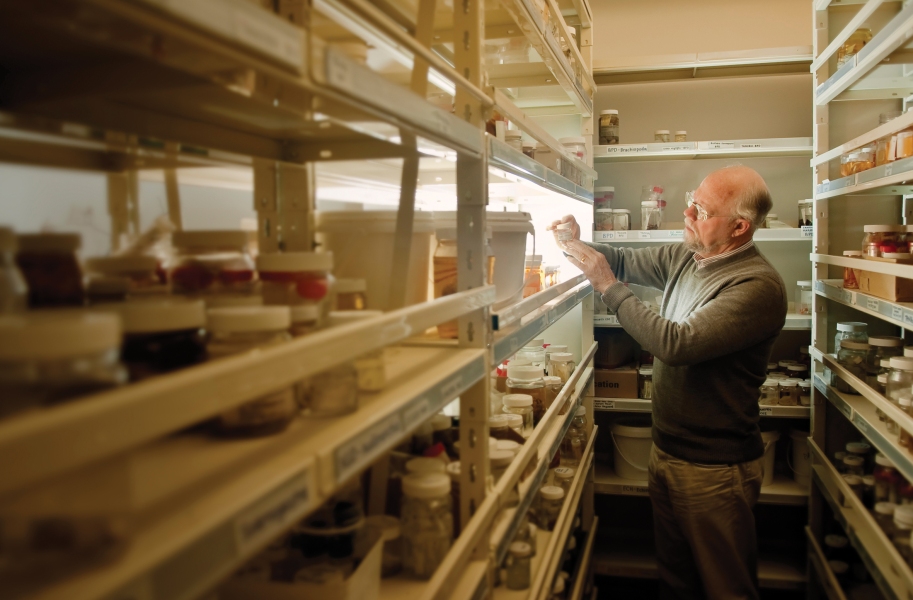Dive beneath the Poor Knights Islands – or just kick over some leaf litter in the bush – and you'll be astounded at just what lives there. We share New Zealand – and its surrounding seas – with about 55,000 other species, and Dennis Gordon wants to name and describe every last one of them.
Bacterium or blue whale, booby or brachiopod, it will eventually find itself itemised in this labour of Gordon's love of living things: The New Zealand Inventory of Biodiversity.
The inventory is – and Gordon says it so casually as to seem oblivious to the magnitude – "a catalogue of all of life, through all of time, in New Zealand". To get some idea of how Herculean a task that really is, you need to know that his most recent release is just the second stage of a three-volume, 1500-page epic written by 227 co-authors from 18 countries.
Volume Two has been described as a "biological telephone directory" of some of Nature's most enigmatic – and abundant – creatures: the Ecdysosoa, or moulting animals. The group includes the centipedes and millipedes, arachnids, crustaceans and insects (New Zealand has around 5480 named, native beetles alone). In there, too, are the roundworms, horsehair worms, the mystifying mud dragons and the mischievously-named penis worms and corset worms.
Volume Two also makes sense of the cryptic Chaetognatha (arrow worms), and – presumably because the living didn't present challenge enough – then delves into the mists of time to classify our extinct, fossil species.
Gordon says that right from the beginning, back in 2000, he "felt that geologists should be involved, so that we could include palaeobiodiversity. If we want to understand the origins of the living biota, we need to know what came before. That's logical: we need to know those ancestral relationships".
But why do we need to know what's out there at all? "Think of it as a stocktake," offers Gordon. "Suppose you own a shop. You need to do an inventory of what you've got. You need to know how fast it's moving, you need to know how much you have of a particular item – so think of a taxonomic classification system of life as the different line items in your supermarket".
If we're to properly protect, or manage those species, then, we have to know what we're dealing with. "In biology, a name is absolutely basic to all of science. If it doesn't have a name on it, it might as well not exist," he says.
"This exercise has provided a gap analysis. We now know how many species we have, how many undescribed species there are in museum collections (about 8000), and we've got estimates of undiscovered species (maybe 40,000, and that's excluding bacteria). We also know who the relevant experts are. That's never been possible before".
Volume Three is due out in January 2012.


